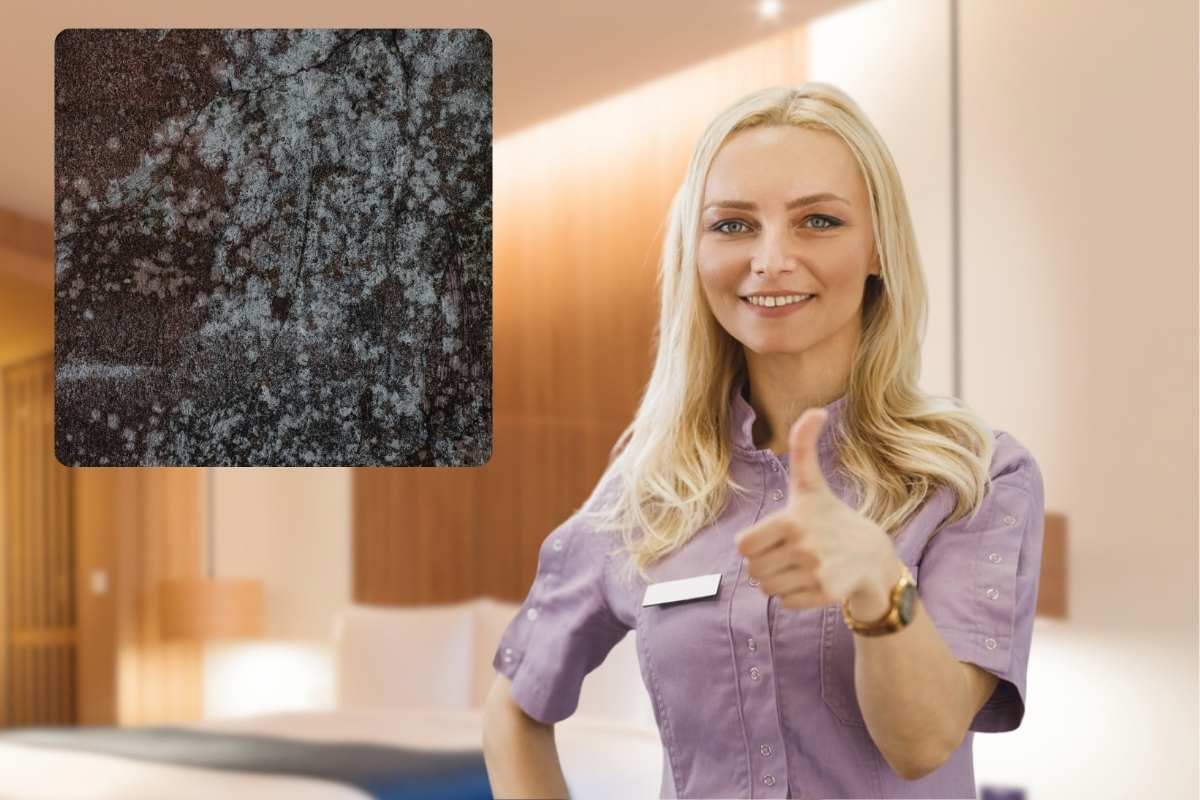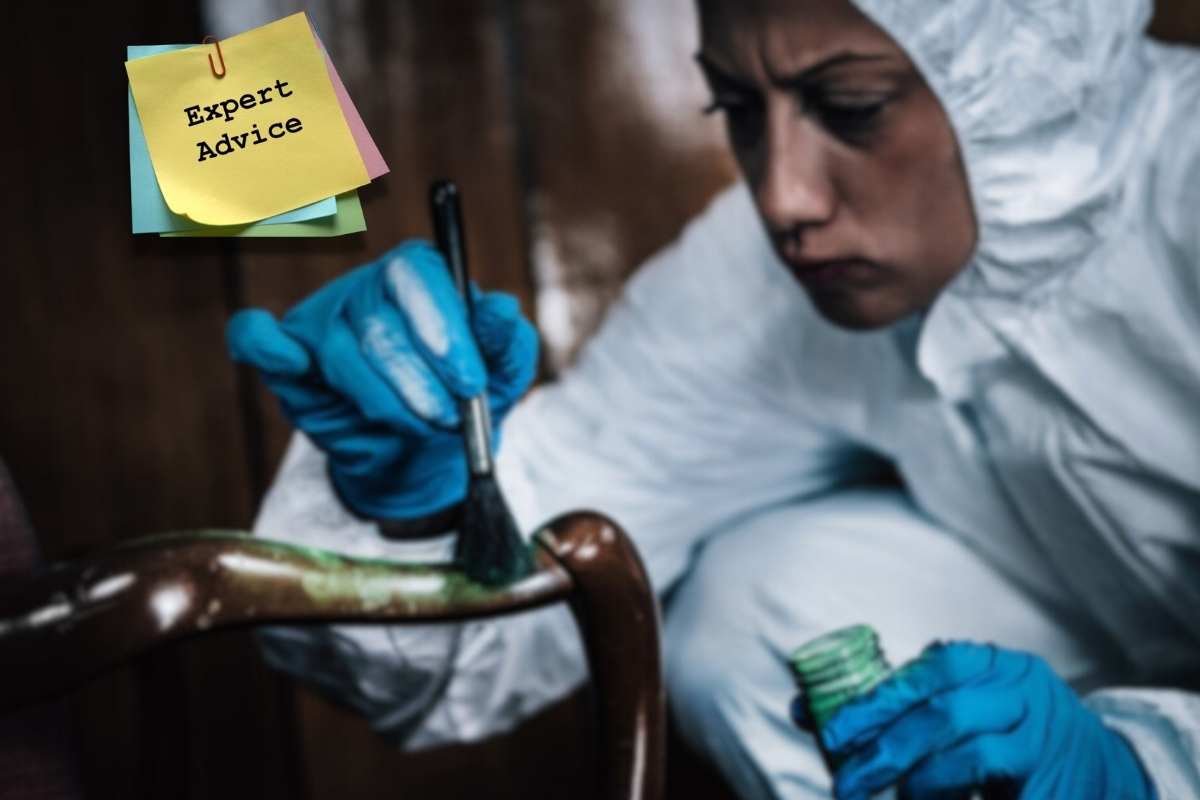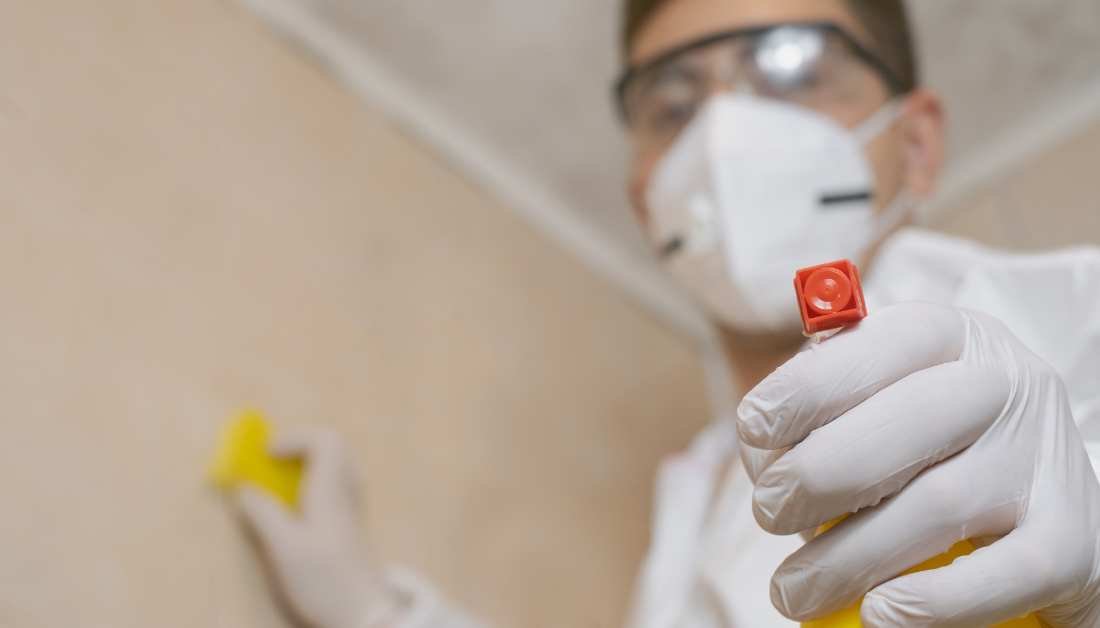Toxic black mold is ‘no doubt’ a serious health hazard that can be easily concealed in unsuspecting corners of your home, slowly releasing spores that exacerbate respiratory conditions and trigger allergies.
If you’ve recently experienced water damage or discovered mold in your home, it’s crucial to check further for the signs of hidden black mold before it gets any worse.
In this article, we’ll explore the ten warning signs of hidden toxic black mold, its impact on seasonal allergies, what it looks like, and how to inspect and test for mold.
-
Persistent Musty Odor

A musty, earthy smell that persists even after cleaning can be one of the first warning signs of hidden mold growth. Toxic black mold thrives in damp, poorly ventilated areas such as basements, attics, and bathrooms.
Even if you can’t see it, the smell of mold can seep through walls, flooring, or even ventilation ducts, indicating that mold may be growing behind these surfaces.
Mold has a distinct, pungent odor that may become more noticeable during periods of high humidity or after it rains.
If you’re using air fresheners or cleaning sprays but the musty odor still lingers, it’s important to consider that there might be mold hiding in areas you cannot access.
Ignoring the smell or relying on short-term solutions could allow the mold to spread and worsen over time.
-
Increased Allergy Symptoms Indoors
One of the more concerning signs of hidden black mold is when you or your family members experience increased allergy symptoms indoors.
If you notice that symptoms like sneezing, coughing, watery eyes, or skin irritation worsen when you’re at home, this could be a result of mold spores in the air.
Since mold spores are microscopic, they can spread through the air easily and impact your health, even when mold is not visible.
How Toxic Black Mold Exposure Amplifies Seasonal Allergy Symptoms
Toxic black mold releases spores and mycotoxins that act as airborne allergens. For people with pre-existing conditions like seasonal allergies, asthma, or bronchitis, black mold exposure can be especially harmful.
Mycotoxins exacerbate inflammation in the respiratory system, worsening symptoms like congestion, throat irritation, and even headaches.
So…
If your seasonal allergies seem worse indoors, mold exposure might just be the underlying cause.
Keep in mind that toxic black mold is not only harmful to those with allergies—it can also irritate the respiratory system of healthy individuals.
More so, this can lead to other symptoms like coughing, sore throat, and difficulty breathing.
-
Visible Water Damage
Water damage is a common precursor to black mold growth. If you’ve had a leak, flood, or plumbing issue, it’s crucial to inspect the affected areas for mold.
Mold often grows in damp areas that have experienced water damage but may not always be visible.
Look for signs like stains, discoloration, or warped surfaces on walls, ceilings, or floors, as these can indicate hidden mold colonies behind the surface.
Any time water damage occurs, there is a risk of mold developing if the moisture is not addressed immediately. Mold can start to grow within 24 to 48 hours in the right conditions, so prompt cleanup and repair are essential to preventing mold from spreading.
-
Unexplained Respiratory Issues
If you or anyone in your home begins experiencing unexplained respiratory issues, such as coughing, wheezing, or shortness of breath, this could be a sign of toxic black mold exposure.
The mycotoxins released by black mold can irritate the lungs and exacerbate existing conditions like asthma and bronchitis.
This is particularly dangerous for individuals with compromised immune systems or pre-existing respiratory conditions.
Even if you’re healthy, long-term exposure to mold can cause chronic respiratory problems. If symptoms like difficulty breathing persist and you have ruled out other potential causes, it’s worth investigating your home for hidden mold.
-
Condensation and Humidity Issues
Excessive humidity or frequent condensation in your home is a major red flag for potential mold growth.
Mold thrives in moist environments, so if you notice condensation on windows, pipes, or walls, it may indicate hidden mold in those areas.
Prolonged exposure to high humidity allows mold to grow in spaces that are often out of sight, like wall cavities, under flooring, or inside HVAC systems. Homes in humid climates or houses with poor ventilation are particularly susceptible to mold issues.
Keeping humidity levels in check (ideally below 50%) and ensuring proper airflow can help prevent mold growth in these areas.
-
Discoloration on Walls or Ceilings
What Does Black Mold Look Like?

Toxic black mold has a distinct appearance that homeowners should be AWARE OF. It often shows up as dark green, black, or gray patches on walls, ceilings, or other surfaces.
These patches may look slimy or fuzzy, depending on the moisture levels.
Sometimes, black mold starts as small clusters that gradually spread over larger areas, especially if the moisture problem isn’t resolved.
You have to inspect discolored patches along baseboards, in corners of the bathroom or basement, and near any water-damaged areas.
Spotted any discolored areas?
It’s essential to take action quickly, as mold spreads rapidly in humid environments.
-
Peeling or Bubbling Paint
If you notice peeling or bubbling paint on your walls or ceilings, this could be an indication of moisture behind the surface, which often leads to mold growth.
As you may have already observed.
Paint exposed to moisture may lose its adhesion, causing it to bubble, crack, or peel away.
Areas near plumbing fixtures, roofs, and windows are especially prone to this issue, as they are more likely to experience leaks.
If such paint damage occurs along with other signs, such as a musty odor or discolored patches, it’s a clear sign that there may be mold growth in those areas. So do well to test the site.
-
Warped or Soft Flooring
Wooden floors that feel soft or warped when you walk on them could be another warning sign of hidden mold.
Water damage beneath the surface can create ideal conditions for mold growth, especially in high-moisture areas like kitchens, bathrooms, and basements.
If you notice that your floors have become spongy or warped, inspect the area for moisture and mold.
Even laminates or vinyl floorings can mask mold growing underneath.
In some cases, you might need to pull up the flooring to address the mold problem beneath it.
-
Recurring Mold Growth in the Same Spot
If you have cleaned up mold before, only to have it return in the same area, this is a clear indicator of an unresolved moisture problem.
Mold will continue to grow in areas where moisture persists, even if you remove the visible mold.
To prevent recurring mold growth, you must address the source of the moisture, whether it’s a leak, high humidity, or condensation. Wiping away visible mold is only a temporary solution.
For lasting results, fix any underlying water issues and ensure proper ventilation in moisture-prone areas.
-
Frequent Headaches or Fatigue
Chronic headaches and unexplained fatigue can result from long-term exposure to mold spores in the air.
The worst part is…
These symptoms are often overlooked but can be a sign that toxic black mold is present in your home.
Mold exposure can impact your central nervous system, causing fatigue, dizziness, and headaches, even if no other obvious mold symptoms are present.
So,
If you find yourself feeling unusually tired or experiencing frequent headaches without any other apparent cause, it’s important to consider whether mold could be affecting your indoor air quality and health.
Testing For Toxic Black Mold: Overcoming Access and Safety Challenges

Attics, crawl spaces, under sinks, HVAC systems, wherever that toxic black mold prefers to hideout in your home is often due to poor ventilation, temperature swings, and sneaky moisture.
However, definitively testing these spaces isn’t always a DIY weekend project.
For instance, the cramped nature of the space, shaky insulation, and safety risks (talking about uneven floors or exposed nails) make attics a challenge.
Sure, DIY kits are cheap and quick, but they’ll miss hidden mold lurking behind walls or in air ducts. Worse, they can’t measure spore counts or tell what type of mold you’re dealing with—details that matter for your health and home.
Professional mold inspection and remediation services, on the other hand, come armed with thermal cameras, moisture meters, air samplers, and many other sophisticated gadgets to hunt mold.
They’ll safely navigate attic obstacles, test air quality, and even decode spore counts and ensure your space is truly safe after cleanup (because yes, “clearance testing” is a thing—and it’s how you ensure the mold remediation clean-up was thorough).
Bottom line? If your attic smells musty, has water stains, or you’re seeing those 10 warning signs, skip the guesswork.
Professionals don’t just find mold; they give you peace of mind. Let them handle the hazards while you enjoy breathing easy.
Don’t risk a half-baked fix—schedule a professional mold inspection today!
Conclusion
Hidden toxic black mold poses serious health risks, especially to those with respiratory conditions or weakened immune systems. Recognizing the early warning signs of hidden black mold can help you take action before the problem escalates.
Regular mold inspections, especially in areas prone to moisture like attics and basements, can prevent mold from causing further damage to your home and health.
Whether you choose DIY or you decide to call a professional mold testing company near you, it’s crucial to address mold issues promptly and thoroughly.
So, stay vigilant and understand the warning signs of hidden mold. In the long run, you protect your family and property from the dangers of toxic black mold.


